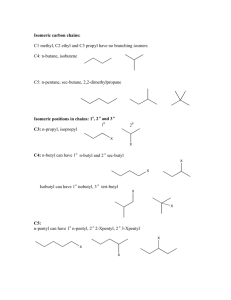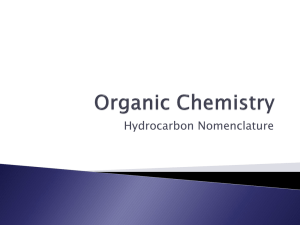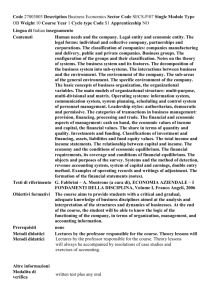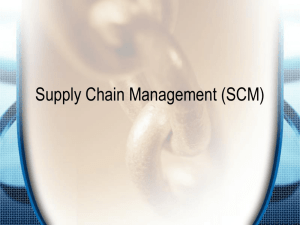New Greenhouse Gas Protocol Standards Supply Chain May 5, 2009 C
advertisement
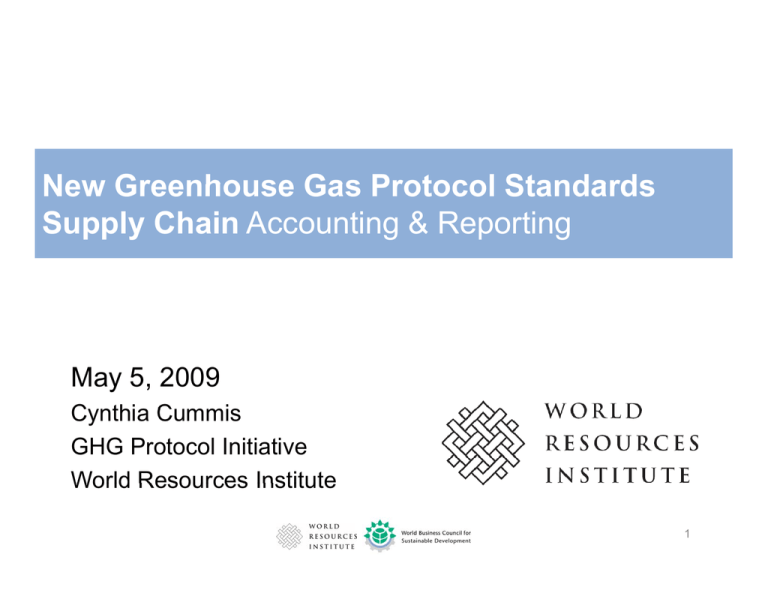
New Greenhouse Gas Protocol Standards Supply Chain Accounting & Reporting May 5, 2009 Cynthia C thi C Cummis i GHG Protocol Initiative World Resources Institute 1 Presentation Outline 1. Overview of GHG Protocol 2. New GHG Protocol Standards 3 Key Issues and Challenges for Scope 3 Standard 3. 4. Process, Timeline and How to Participate 2 Greenhouse Gas Protocol Initiative Convened in 1998 byy WRI and WBCSD The most widely used international accounting tool for government and business leaders to understand quantify understand, quantify, and manage greenhouse gases GHGProtocol.org 3 Programs Based on GHG Protocol • • • • • • • • • • • • • • • • • • Carbon Disclosure Project (CDP) The Climate Registry g y California Climate Action Registry Chicago Climate Exchange Dow Jones Sustainability Index EU Emissions Trading Scheme F French h REGES Protocol P t l Global Reporting Initiative METI, Japan Mexico GHG Program Respect Europe Business Leaders Initiative for Climate Change (BLICC) International Trade Associations (Aluminum, IPIECA, ICFPA, Cement, Iron and Steel) UK Emissions Trading System U.S. EPA Climate Leaders Initiative World Wildlife Fund Climate Savers World Economic Forum Global GHG Registry ISO 14064 Part 1 U S Department of Energy (1605b) U.S. 4 GHG Protocol Accounting Standards Product Life Cycle Accounting & Reporting Standard Corporate Value Chain Accounting & Reporting Guidelines 5 Drivers for New Guidelines Corporate GHG management moving beyond companies’ own operations operations, toward full value chain Increasing focus on GHG emissions associated with goods and services Push for supply chain GHG disclosure and risk management Increasing public reporting of scope 3 emissions and product-level GHG emissions Increase in B2B requests for product and supply chain information Need to harmonize and standardize existing and emerging approaches 6 GHG Protocol Supply Chain Survey Results Important business issue? 100 surveyed Key K results lt 1. Companies expanding GHG management to full value chain / life cycle 2. Diversity of current accounting i practices i 3. Significant and long-term need for new GHG Protocol guidelines 4. Need for both productand d corporate-level t l l guidelines 100 80 60 40 Yes No 20 0 Need for new guidelines? 80 60 40 Yes No 20 0 7 Two Related Standards 1. Product Life Cycle GHG Accounting & Reporting Ö Quantify and report product-level emissions g life cycle y assessment standards Ö Build on existing 2. Corporate Value Chain Accounting & Reporting Ö Quantify and report major GHG emitting activities in the value chain at the company/organization level Ö Build on GHG Protocol Corporate Standard 8 Emissions Across a Product Life Cycle 9 Source: Georgia Pacific Emissions Across a Value Chain Upstream (suppliers) Extraction of purchased materials Production of purchased materials Transport of purchased materials Waste from purchased materials Electricity Generation Company’s Own Operations Downstream (customers) Transportt off sold T ld products d t Use of sold products Disposal of sold products Scope 1 Scope 2 10 3 Scope Scope 3 Scope 3 emissions are a consequence of the activities of the company, company but occur from sources not owned/controlled by the company Scope 3 includes the emissions from the use of a company’s products; the emissions of a company’s suppliers; the transportation emissions in a company’s company s value chain; the disposal of products it sells; etc. Scope p 1 + 2 + 3 = the full impact p of a company’s p y activities on climate change 11 Business Goals of New Standards Identify and prioritize GHG hot spots and reduction opportunities in the value chain chain—at at the product and entity levels Establish baselines, baselines set reduction targets and track performance—at the product and entity levels Inform product/material purchasing and supplier selection Enable credible disclosure and reporting—at the corporate level 12 Key Issues and Challenges 1. Setting Boundaries 2. Allocating Emissions 3. Collecting Data and Quantifying Emissions 13 1. Setting Boundaries What do you include / exclude in your inventory? How far back in the supply chain? Should you include capital goods/overhead? When should you include the product use and di disposal l phases? h ? 14 Allocating Emissions How do you allocate emissions between multiple suppliers products suppliers, products, and customers? Mass Volume Energy Economic value Units of production 15 Allocating Emissions Supplier A Supplier B Supplier C C Company’s ’ O Own Operations O ti Customer A Customer B Customer C 16 3. Collecting Data How far back in the supply chain should you collect actual t ld data t ffrom companies? i ? When should use you use secondary data from national/regional sources? p do yyou make about consumers’ What assumptions use and disposal of your product? How do you address data confidentiality issues? 17 Collecting Data Practical Challenges Collecting GHG data from global suppliers; collecting GHG data by product category Exchanging data between suppliers and customers; addressing confidentiality concerns Ensuring transparent reporting and verification along g the supply pp y chain; ensuring g data q quality y 18 Standard Development Process Broad multi-stakeholder process Business, government, NGOs, academia 500+ stakeholders so far, from many countries and sectors Steering Committee Meeting: September 10 in Washington DC EPA, EU, UNEP, Wal-Mart, GE, NRDC, CDP, Carbon Trust, ISO, etc.; gained consensus on objectives and strategy TWG Meeting: September 23-24 23 24 in London 100 people; highly successful in gaining consensus around need for robust yet practical standards to be implemented globally l b ll 19 GHG Protocol Timeline 1. Convene steering committee, working groups, and stakeholder advisory group (2008) 2. Working g groups g p begin g drafting g ((Nov 2008)) 3. Complete draft guidelines (2009) 4. Pilot testing (2009) 5. Complete p final g guidelines ((2010)) 20 Options for Participation Options 1. Participate in stakeholder advisory group 2. Pilot test draft guidelines Contact: C t t C thi C Cynthia Cummis i World Resources Institute Phone: +1-202-729-7846 +1 202 729 7846 E-mail: ccummis@wri.org g www.GHGProtocol.org 21
